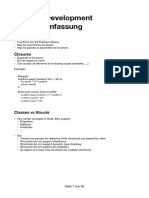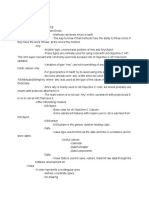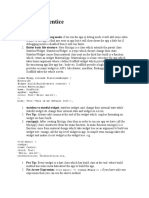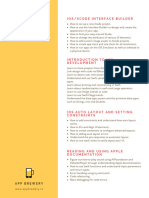0% found this document useful (0 votes)
29 views3 pagesSwiftUI Differences Cheatsheet
This document outlines key differences in SwiftUI, focusing on property wrappers like @State, @Binding, @ObservedObject, and @StateObject, explaining their ownership and lifecycle management. It also compares List and ForEach for displaying collections, and discusses onAppear versus onReceive for handling view lifecycle events. Additionally, it contrasts NavigationView and NavigationStack, highlighting the advancements in navigation management in iOS 16 and beyond.
Uploaded by
kg.ios2023Copyright
© © All Rights Reserved
We take content rights seriously. If you suspect this is your content, claim it here.
Available Formats
Download as PDF, TXT or read online on Scribd
0% found this document useful (0 votes)
29 views3 pagesSwiftUI Differences Cheatsheet
This document outlines key differences in SwiftUI, focusing on property wrappers like @State, @Binding, @ObservedObject, and @StateObject, explaining their ownership and lifecycle management. It also compares List and ForEach for displaying collections, and discusses onAppear versus onReceive for handling view lifecycle events. Additionally, it contrasts NavigationView and NavigationStack, highlighting the advancements in navigation management in iOS 16 and beyond.
Uploaded by
kg.ios2023Copyright
© © All Rights Reserved
We take content rights seriously. If you suspect this is your content, claim it here.
Available Formats
Download as PDF, TXT or read online on Scribd
/ 3























































